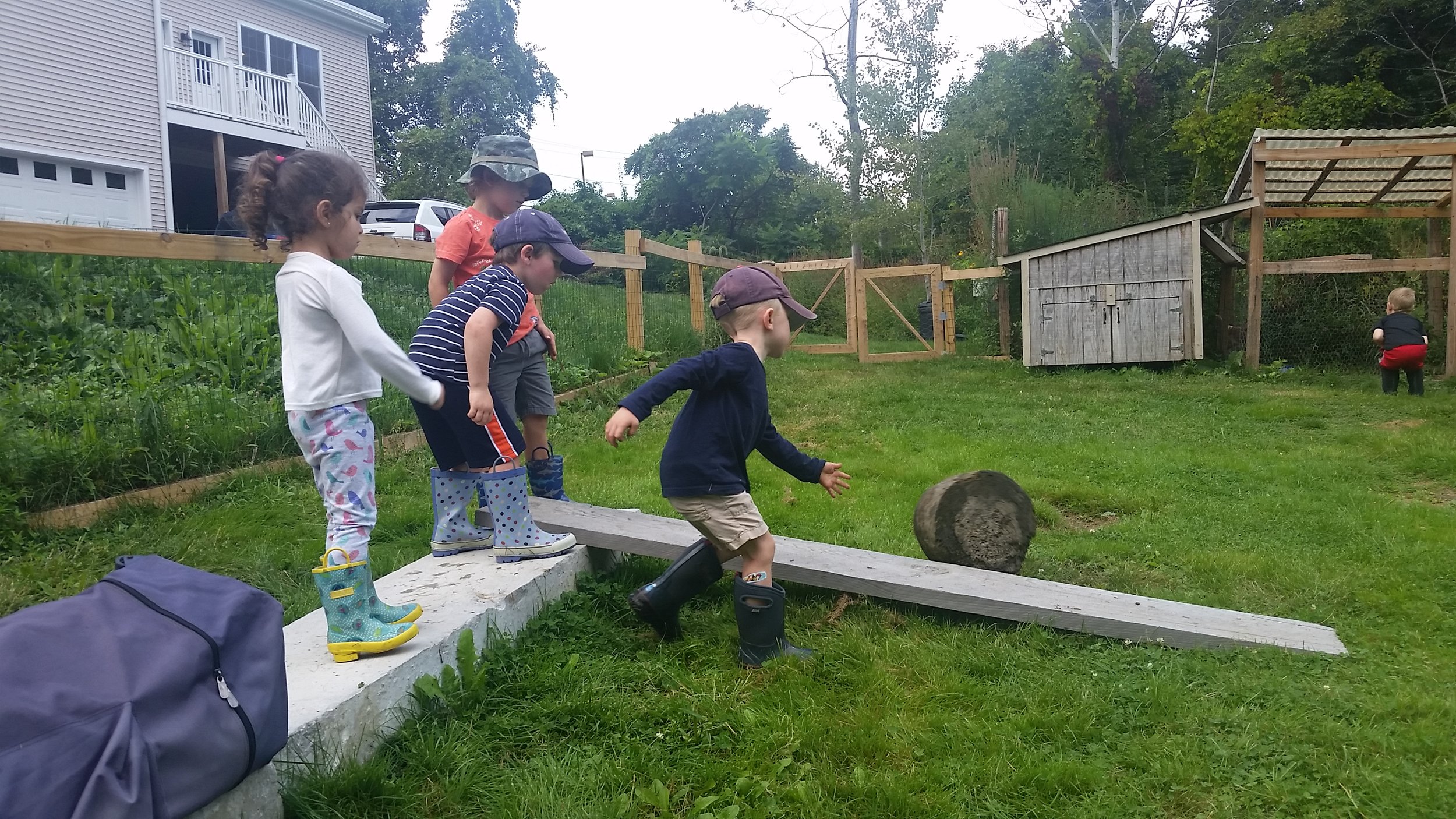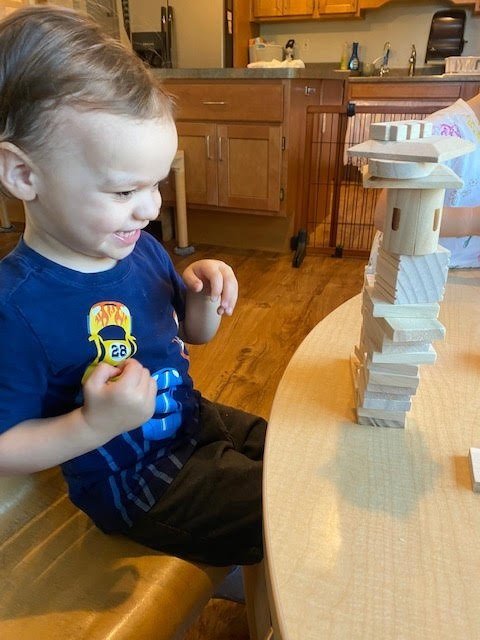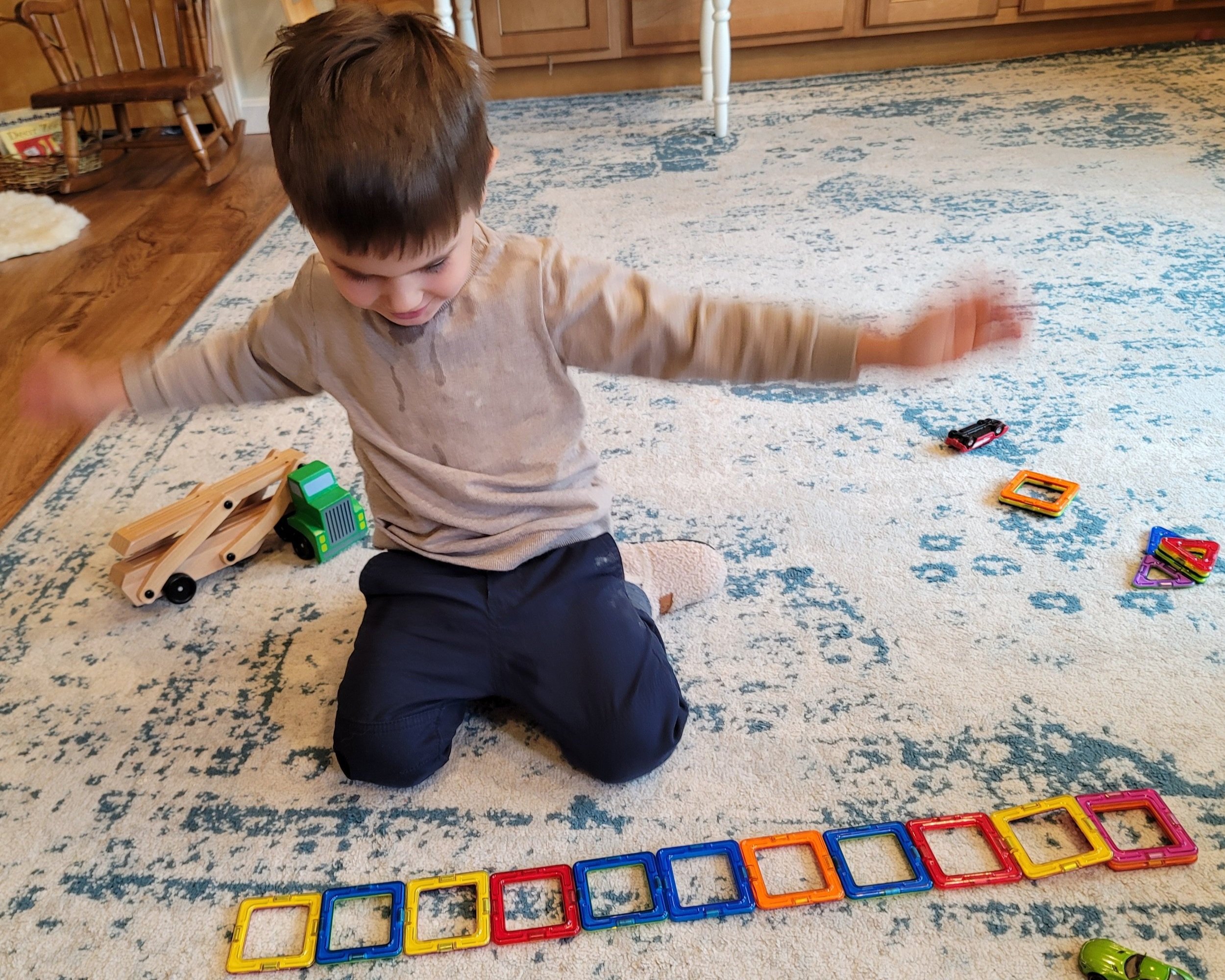The Magic of Learning Stories
Maximizing Your Child’s Learning Journey, Together
What is the best way to assess young children’s learning and development in school and comprehensively relay it to parents? This question has long been debated within the education community—across all student age groups. While many schools have settled on teachers filling out standard checked-box assessment sheets with limited commentary (Child exercises self-control; Child recognizes all colors; Child recognizes number 0-9…), at Harmony, that just doesn’t feel authentic to who we are, as educators who seek to holistically understand each child. Just as storytelling is central to our teaching and to the way children learn best, it is key to our preschool and kindergarten assessment practices.
Harmony teachers are trained to pay close attention to children’s daily play habits—keenly observing each child’s individual interests, choices made around the classroom, how materials are used, chosen playmates, problem-solving strategies, and so on.
To the casual bystander, these habits and choices will probably just look like a child randomly opting to play with various objects and friends for varying amounts of time each day. But to Harmony educators, these unique selections tell us everything we need to know about how your child learns best and allow us to build individualized strategies to optimize his or her learning success throughout the school year.
Though we’ve dabbled with variations on the popular checked-box method to document children’s unique learning paths and relay the key details to parents, we found it fell short—leaving our observational processes and skill-building strategies uncommunicated to families.
Enter Learning Stories—narrative assessments about each child based on daily observations made throughout the school year, written from the perspective of the storyteller (teacher) to the child, accompanied by photos of each child actively learning in the classroom. In one fell swoop, a Learning Story documents your child’s play choices and unique, cumulative learning journey, while communicating these choices and progress both to your family and Harmony educators.
From the start of the school year, we continuously send Harmony parents photos of their children at play in the classroom. Many of these photos are later worked into our Learning Stories, which we first present to families at the half-year mark. Viewing these photos of your child before they are incorporated into a Learning Story, you likely just see the surface-level observation of your child at play—it looks like what you see at home, and probably don’t think twice about. Part of the beauty of developing and sharing Learning Stories is that they allow Harmony educators to pass our observational lens to you as parents—showing you what we see beneath that simple surface, so that you may observe your child’s deeper, innate, burgeoning learning strategies hidden within everyday play at home.
When we present you with your child’s Learning Stories, we invite your reflection and feedback as well as your child’s, share our own developmental insights with you, and combine all of this to customize an educational strategy to spark your child’s unique interests and skills for the remainder of the year, implementing materials and tools that will maximize his or her individual learning.
What A Learning Story Assessment Looks Like
Accompanied by photos of your child “in the field,” observations like the following illustrate rich, active learning processes better than a checkmark ever could.
Instead of a checkmark next to "Child can sort colors," you will read something like "Sam, I watched you discover that the matchbox cars were different colors. You concentrated for a long period of time on sorting them into groups according to color. I heard you say: This car parks here because it is red.”
Instead of a checkmark next to "Child is curious," you will read something like "Peggy, I saw you following a butterfly in the backyard today. You had a working theory that it might fly away if you got too close, so you stayed very still and quiet. Later, you asked me for paper and crayons so that you could draw the butterfly. What a clever scientist you are! I will be sure to bring out our books about butterflies so that you can learn which type of butterfly you were observing."
We love that Learning Stories provide an authentic way to share the incredible growth we see deep within your child’s daily play, focusing on his or her ever-growing skills, awareness, and knowledge. As we traverse the year, we are continually revisiting and building your child’s Learning Stories portfolio—reinforcing each teacher’s connection to the magic of early learning, while ensuring we work together with you and your child to maximize his or her one-of-a-kind learning potential.
We’d love to see any Harmony-inspired moments you capture along your child’s early years journey. Tag us (@HarmonyNLC) on Facebook and Instagram, and use the hashtags #HarmonyNaturalLearningCenter #TheHarmonyApproach #HarmonyNLC
______________________________
Interested in introducing more of The Harmony Approach to your preschooler at home? Check out Harmony at Home today (FREE activities available).














